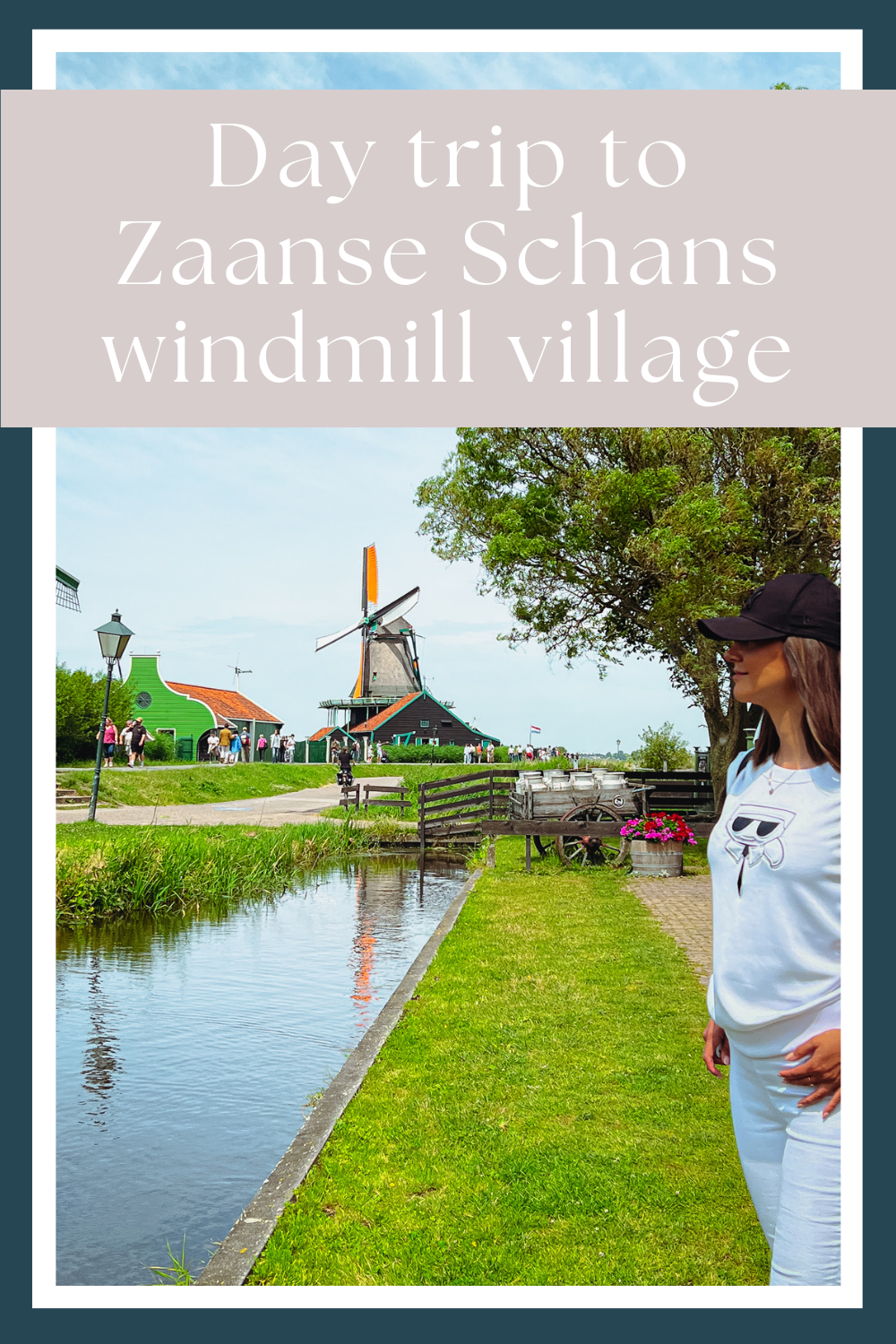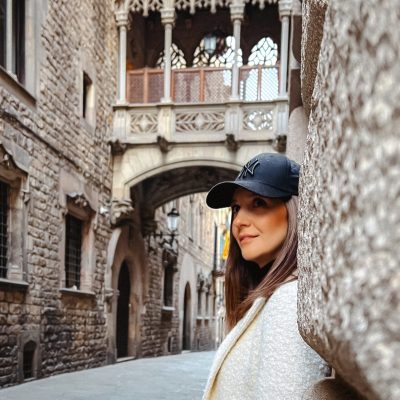The Zaanse Schans is a charming village close to Amsterdam, famous for its windmills. But Zaanse Schans is so much more than just its windmills. It’s a small historic village that takes you back in time, offering you a glimpse of the local Dutch life back in the old days.
A fantastic day trip from Amsterdam is a visit to the picturesque Dutch windmill village park at Zaanse Schans. You will find iconic windmills on the Zaan river, traditional houses, shops, and museums.
Zaanse Schans has an open-air museum feel and has become a popular tourist attraction, given that entrance into the area is free.
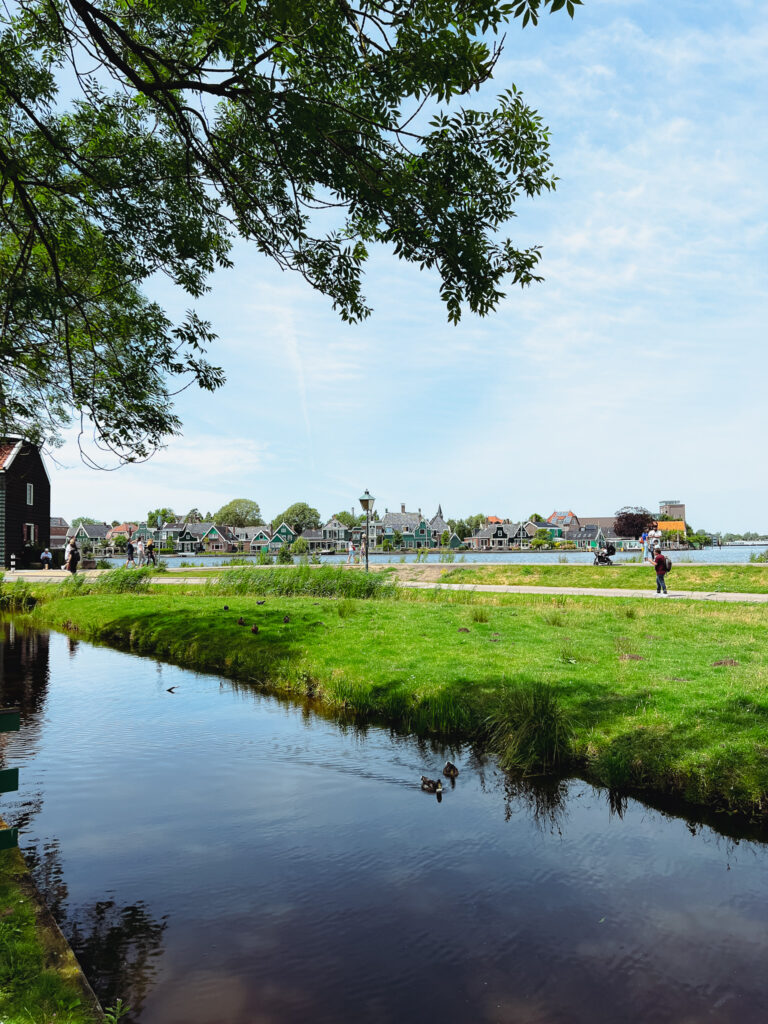
How to get there
Zaanse Schans is close to Amsterdam and therefore very easy to visit during an Amsterdam city trip. There are three ways to get here.
Book a tour! This is the easiest way; you’ll have a guide explaining the windmill village’s history. There are plenty of tours from Amsterdam za Zaanse Schans; choose one that’s best for you.
I prefer exploring attractions on my own, so I highly recommend going to Zaanse Schans windmill village by yourself.
It’s only a 30-minute drive, so you could get a rental car from Amsterdam.
If you prefer public transportation, there are two choices to get to Zaanse Schans.
Bus: a bus from Amsterdam Central Station takes you right in front of the park (Connexxion bus 391 and 891).
Train: take one of the NS Sprinter-stopping trains from Amsterdam Central Station to station Zaandijk Zaanse Schans. There are up to four trains per hour, and the trip is under 20 minutes. The historical windmill village is 10-15 minutes from the Zaandijk Station.
Where to stay
If you want to experience the Zaanse Schans village like a local, spend the night here. There are very few accommodation choices, and you can stay at the old house that has been turned into a bed and breakfast, B&B Heerlijck Slaapen. Another great place is the iconic Inntell Hotel Zaandam nearby, with its unique design of the typical green Zaan buildings.
The history of Zane Schans windmill village
The main attractions in the village are the windmills. There are 13 mills on the property; half are fully functional and open for visits for at least part of the year. In the 18th and 19th centuries, these giant buildings were crucial to the Dutch economy, making all kinds of items from furniture to paper to flour.
Watching the still operating mills is a window into history.
De Kat Mill
The De Kat mill is particularly historic. The last remaining wind-powered paint and dye mill in the world was built between 1646 and 1696, and it was destroyed by fire in 1782 and then quickly rebuilt. Most days, you can see it grinding chalk to make traditional pigments for paint.
De Zoeker Mill
Next to De Kat, the oil mill De Zoeker is one of the oldest structures here. Built in 1610, it first pumped water before becoming an oil mill, a paint mill, and returning to an oil mill again. It was relocated here in 1968, making peanut oil on site.
Het Jonge Schaap Mill
The biggest operation is the wind-powered sawmill, Het Jonge Schaap, one of the newest additions. The original mill was built in 1680 in Zaandam and was demolished in 1942. In 2005, craftsmen rebuilt it in the traditional style based on original drawings. You can see a video about the building process inside the mill. Het Jonge Schaap is a commercial business that saws wood for sale and builds furniture on site. It’s impressive to watch the creations taking shape in front of you.
Zaanse Schans windmill village
Zaanse Schans windmill village has only been constructed quite recently! It was created in 1963 as an architectonical reserve. Historical buildings and monuments from the area were relocated here to create the historical village you can visit today. Even the iconic windmills were moved here. The Zaanse Schans village has charming green wooden houses you’ll only find in this Zaan area in the Netherlands. To preserve those historic Zaan houses, the most beautiful ones were selected and relocated. And that is why the Zaanse Schans is an open-air conservation area and museum with protected status.
However, Zaanse Schans was not designed to be a tourist attraction. The tiny new village has been inhabited from its first days, though it soon attracted more and more visitors. Other historic buildings were quickly moved and turned into museums and tourist shops to accommodate that many tourists daily. Where the local school was supposed to be built, a huge parking lot was designed, and in the seventies, the Zaanse Schans village became the tourist site it is today.
Exploring the Zaanse Schans windmill village is mainly about wandering around the charming houses, seeing the windmills, and visiting the shops and museums. It is tiny, so you’ll need less than a full day for your visit. You can check which museums, windmills, and shops are opened on the official website.
Zaanse Schans windmill village has eight windmills lined up along the Zaan river creating the iconic sight the village is known for. There are also four more miniature windmills, and you’ll see them in and around the village.
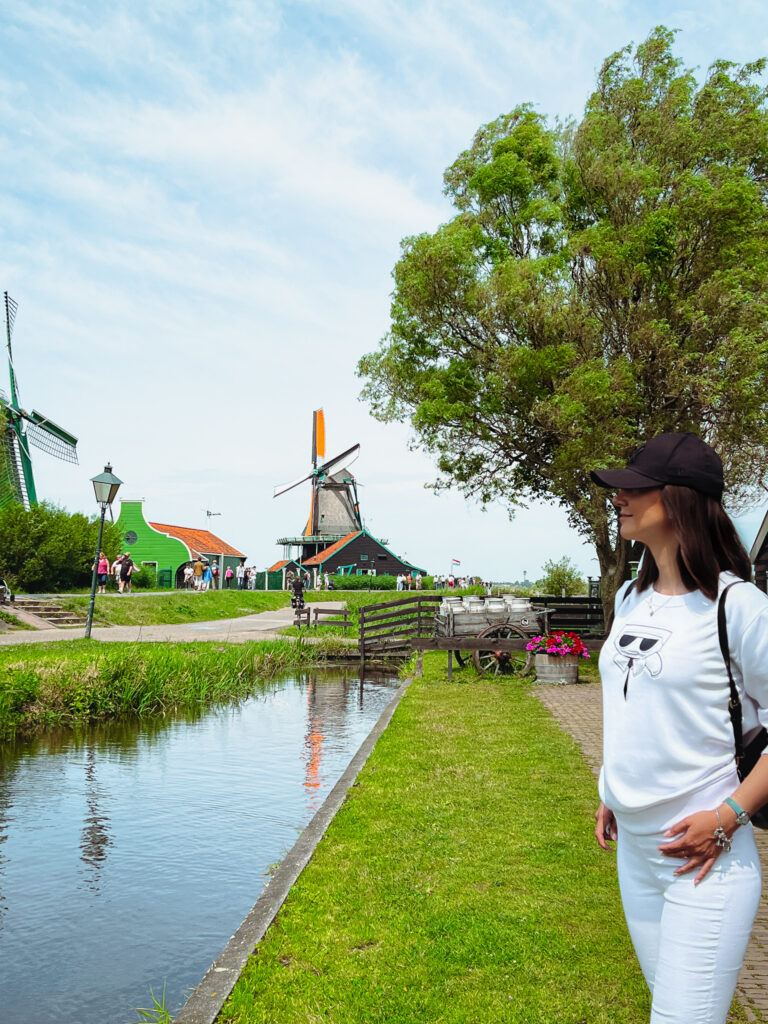
Zaans Museum
The Zaans Museum has over 32,000 historical artifacts and gives visitors an in-depth understanding of the Zaan region and how it has changed over the centuries.
The Zaans Museum gives a historical overview of the people and industry of the area. It has an extensive collection of paintings, costumes, furniture, and multimedia exhibits.
The museum also houses the history of the Verkade Experience, a chocolate and biscuit maker, including the old manufacturing machines.
In addition, the Zaans Museum includes 3 living history museums at Zaanse Schans:
The Weaver’s House shows how sails were traditionally made using looms.
The Tiemstra Cooperage will show you the craft of making wooden barrels which were vital for transporting goods.
Jisper House is a fisherman’s cottage from the village of Jisp dating to around 1850. You can try on a traditional local costume.
There are also several artworks in the museum. Large family portraits show prominent residents of the Zaan region in their best attires. Other works depict the picturesque landscape that echoes today in the windmills. The most famous work in the collection is Claude Monet’s “The Voorzaan and the Westerhem,” an art piece showing the mills and boats of the region, which he painted in 1871.
Admission to Zaans Museum costs €12.50, children €6.50. Amsterdam City Card and Museumkaart holders get free entry. If you just wish to visit Weaver’s House and Cooperage, admission costs €2.50 for adults and €1 for children.
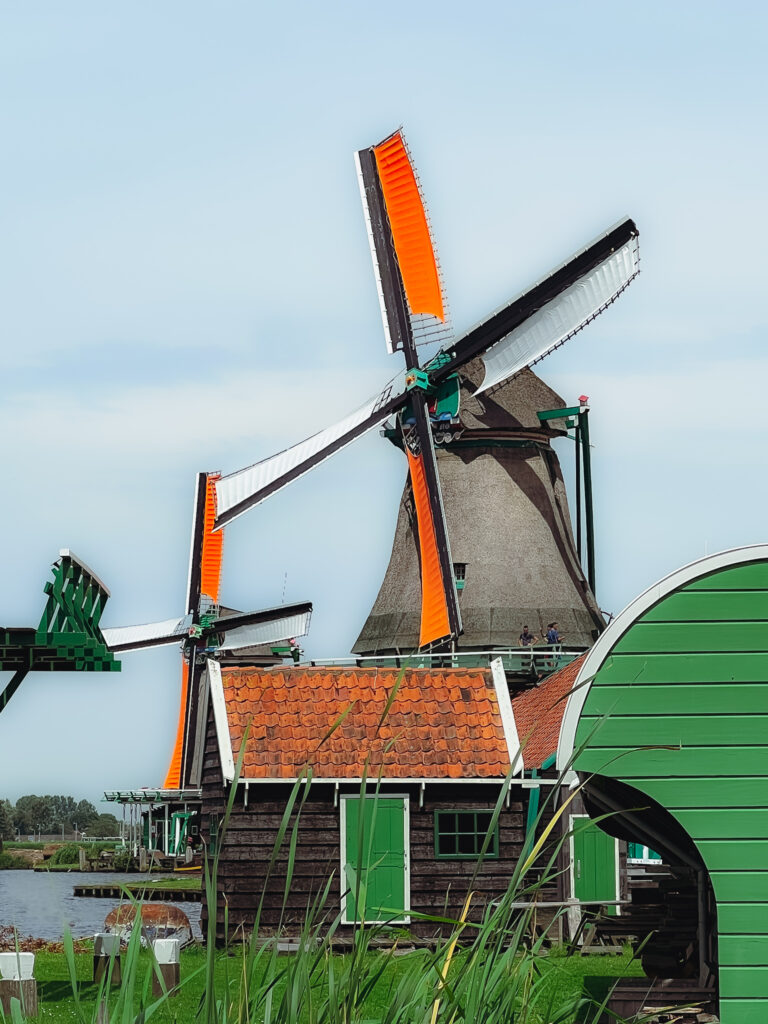
Other museums & attractions at Zaanse Schans windmill village
The Albert Heijn Museum Shop is a reconstruction of the first ever Albert Heijn store from Oostzaan, dating back to the late 19th century. Today Albert Heijn is the biggest supermarket in Amsterdam and the Netherlands, and the entrance is free.
The Zaanse Time Museum shows the history of Dutch timepieces with a collection of clocks that chime together on the hour. Standard entrance is €11 for adults and €5.50 for children. Free admission for Amsterdam City Card and Museumkaart.
The Bakery Museum de Gecroonde Duyvekater, where you can sample the Duivekater, a famous Zaanse sweet bread. Free entrance.
Honig Breethuis is a 19th-century merchant family house. The entrance is €7.50 for adults.
The Catharina Hoeve Cheese Farm is a replica of an old farm from Oostzaan. Cheesemakers wear traditional costumes and offer daily demonstrations.
Have you ever wondered how the ubiquitous Dutch clogs are made? The Clog Workshop allows you to see a clog maker in action. The entrance is free, and the onsite museum houses an impressive collection of wooden shoes.
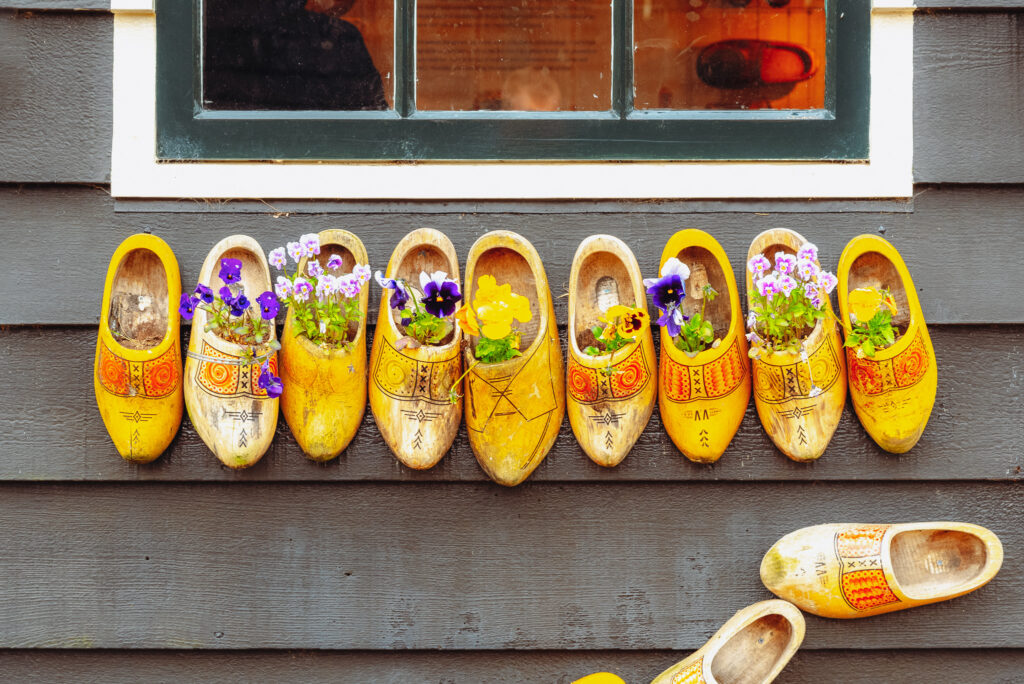
World of Windmills at Zaanse Schans
Zaanse Schans is primarily famous for its wooden windmills. The old industrial area of the Zaanstreek once featured more than 1,000 windmills.
The World of Windmills opened in 2020 and includes the Mill Museum and the chance to visit several working windmills.
The Mill Museum houses an interactive exhibition about various aspects of mill life, culture, and trade. The highlight is perhaps an 11-meter wide panoramic painting of the windmills in Zaandam around the 1800s.
Admission to the Mill Museum costs €10 for adults, and individual entry to a mill costs €5 for adults. Combi World of Windmill tickets (Mill Museum + windmill) cost €15 (1 windmill) or €18 (2 windmills). Buy a World of Windmills ticket here.
A Zaanse Schans card is available for purchase (€23.50), which offers entry into the Zaans Museum, Zaanse Time Museum, the Weaver’s House, and Cooperage. You can also visit the Mill Museum, paint mill De Kat and sawmill Hat Jonge Schaap. The Card saves about €18 when taking into account all entrance fees. Buy the Zaanse Schans card here.
Alternatively, you can buy the Amsterdam City Card here. This will include free entry into the Zaans Museum (including Cooperage and Weaver’s House), Zaanse Time Museum, Mill Museum, and entrance to windmills. It also includes admission to Amsterdam attractions and GVB public transport.
Windmill Cruises Zaanse Schans are available with departures every 30 minutes between 0930 and 1630. A cruise in a glass-topped boat takes 45 minutes.

Is visiting worth it?
Yes, it’s totally worth it! I loved the chance to soak up the history, explore the windmills, and learn about the Zaan district.
The Zaanse Schans windmill village is a picture postcard version of a traditional Dutch village in a water and country setting.

